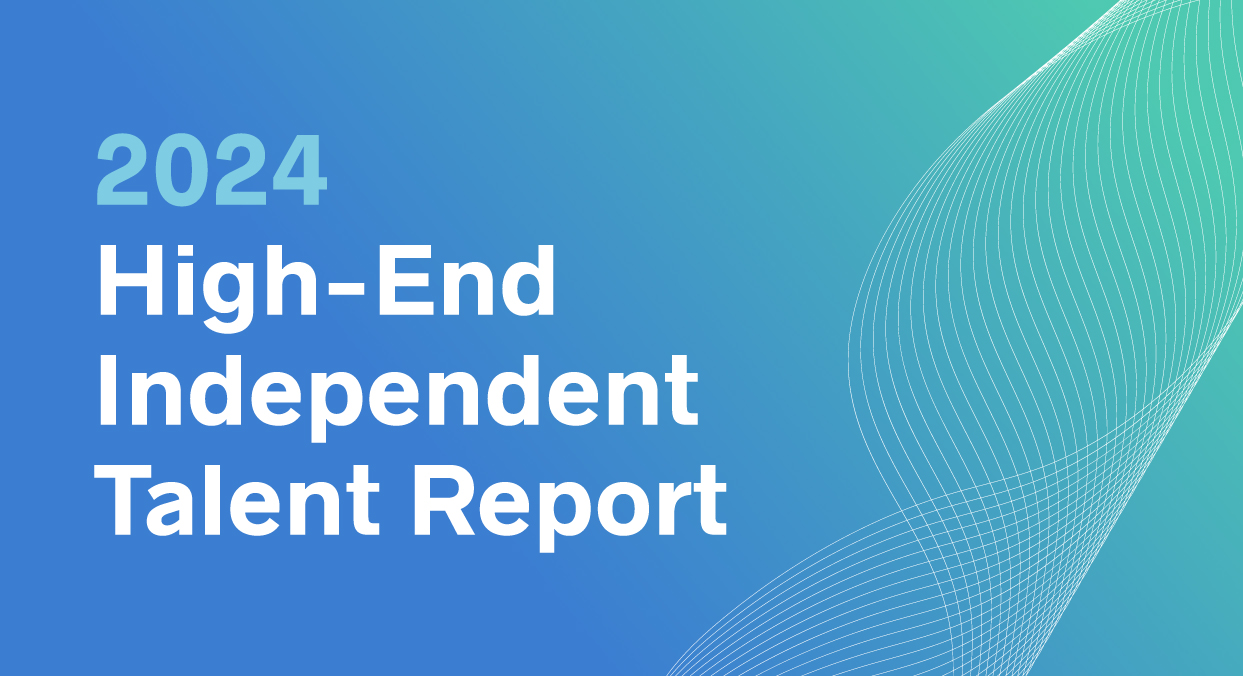
In recent years, the way we approach work has undergone a remarkable transformation, reshaping the very fabric of organizational dynamics. The traditional norms of fixed, rigid, and siloed workforces have given way to a new paradigm—one defined by agility, adaptability, and flexibility.
Companies today navigate a landscape marked by rapid changes, technological advancements, and shifting consumer behaviors, compelling them to reassess how they structure their teams and engage talent. This seismic shift has propelled the rise of the liquid talent model, revolutionizing the concept of work itself.
What Is Liquid Talent?
A “liquid talent” model describes a highly adaptable and dynamic staffing structure marked by a strategic transition away from the constraints of traditional full-time employment. Instead, companies are embracing a hybrid, liquid workforce approach—strategically supplementing in-house teams with on-demand, independent talent such as management consultants, interim executives, project managers, and industry and functional experts—to fill roles and gaps and provide expertise as needed at any given time.
A liquid talent model enables teams to rapidly scale up or down based on organizational needs—quickly and easily harnessing specialized skills for specific projects or periods.
The New Workforce Landscape
This framework was already growing in popularity before the pandemic, but shifts in the way we think about work broadly and the tech we have at our disposal, as well as the onslaught of stressors and opportunities of the past several years, have accelerated the pace of change. In fact, the number of full-time independents is now up to 27.7 million in the US—a remarkable 73% growth since 2019, according to MBO Partners. Independents now make up 44% of the US workforce. That’s a lot of talented professionals who are accessible only on the independent market!
In this talent pool, you’ll find seasoned executives who prefer working as interim leaders, classically trained consultants who want to do more hands-on work, and experts in cutting edge fields like artificial intelligence who can offer their knowledge to all manner of companies—and these professionals are all used to jumping into new environments and seamlessly collaborating with existing teams.
Whether the task at hand is pharmaceutical product development, digital transformation, or a post-merger integration, the skills needed for one stage are often different from the next. Companies can now bring in talent who have “been there, done that” every step of the way. They can assemble bespoke teams for specific projects or objectives and pivot swiftly without getting bogged down.
Benefits of Embracing the Liquid Talent Approach
1. Agility and Adaptability:
In today’s volatile business landscape, agility is paramount. The ability to swiftly respond to market shifts and tech advancements is a competitive advantage. Liquid talent offers unparalleled agility, allowing companies to assemble specialized teams quickly, scale operations efficiently, and adapt to changing business landscapes.
2. Access to Specialized Skills and Hard-to-Find Talent:
The traditional workforce model often limits companies to the skills they have in house or the talent on the full-time market. However, a more agile approach unlocks access to a diverse pool of experts worldwide—talent who choose to work independently because they value the flexibility, challenge, and satisfaction of project-based work. Companies can bring in individuals with niche expertise, ensuring that every project benefits from the best-suited talent available.
3. Cost Efficiency:
Maintaining a large permanent workforce comes with fixed costs, including salaries, benefits, and overhead expenses. Embracing a variable staffing approach enables companies to optimize costs by engaging resources only when necessary. This strategy has already been proven to be especially effective in professional services staffing—an industry characterized by frequent cycles of high and low demand— and in this time of constant change and uncertainty, corporate leaders are increasingly also coming to realize the cost benefits of staffing variability.
4. Innovation and Fresh Perspectives:
Diversity in talent brings diversity in ideas. The infusion of fresh perspectives from a varied talent pool fosters innovation and creativity within organizations. Liquid talent introduces new ways of thinking and problem-solving, driving continuous innovation and allowing traditional full-time employees daily opportunities to learn and upskill.
5. Enhanced Flexibility and Scalability:
By adopting a liquid talent strategy, companies can scale their workforce up or down rapidly, aligning with project demands or seasonal fluctuations. This flexibility allows for better resource allocation, ensuring optimal efficiency and productivity.
6. A Global Talent Pool:
In a digitally interconnected world, geographical boundaries are no longer barriers. Liquid talent enables companies to harness expertise from anywhere, fostering a truly globalized approach to business operations.
Your New Competitive Advantage
With today’s pace of change, embracing this paradigm shift isn’t just an option—it’s a strategic imperative for companies aiming to stay competitive.
By working with a partner like Business Talent Group (BTG), companies can quickly tap into a deep network of highly skilled talent. BTG carefully and compliantly curates, vets, and deploys these professionals to ensure they fit in with an organization’s culture and can work hand-in-hand with existing teams. BTG also provides ongoing oversight to ensure that projects are delivered on time and expectations are met.
Reach out today to find the perfect talent for your pressing project.
GET THE SKILLS YOU NEED
Thousands of independent consultants, subject matter experts, project managers, and interim executives are ready to help address your biggest business opportunities.



















![[Podcast] Bloomberg Businessweek Covers the Latest On-Demand Talent Trends amid Economic Uncertainty](https://content.cdntwrk.com/mediaproxy?url=https%3A%2F%2Fbusinesstalentgroup.com%2Fwp-content%2Fuploads%2F2023%2F04%2FBloomberg-2023-HEITR-thumbnail.jpg&size=1&version=1713294640&sig=ab0b4ac8aa5da3ee45099eec36d1f0af&default=)